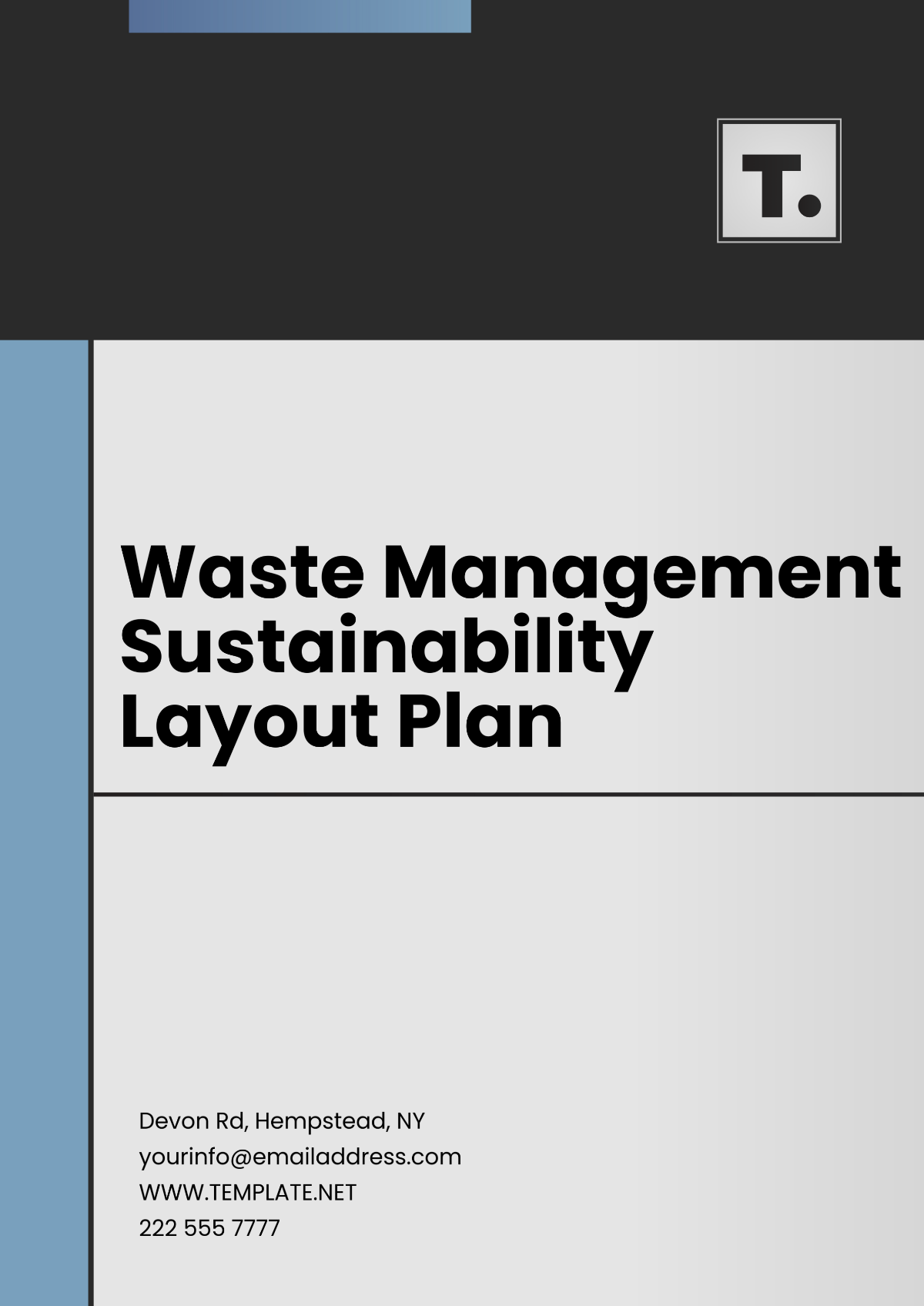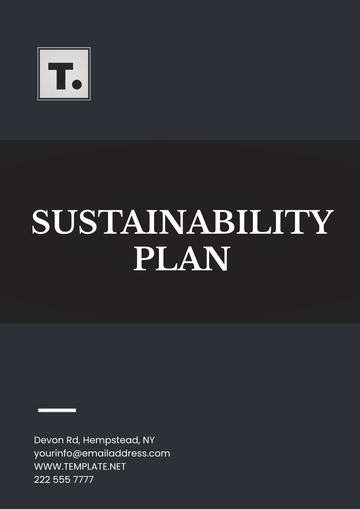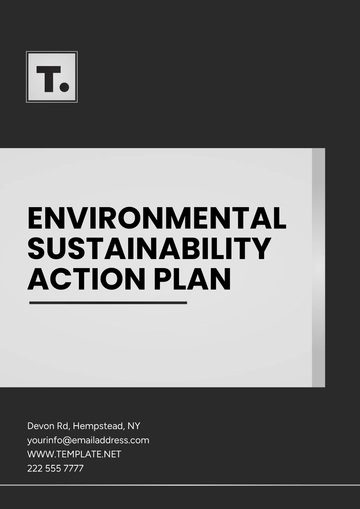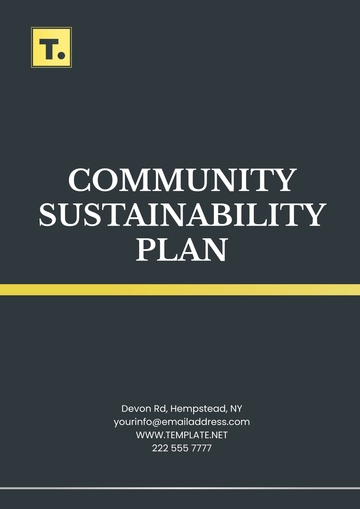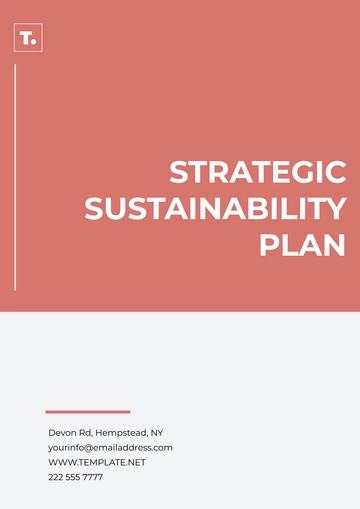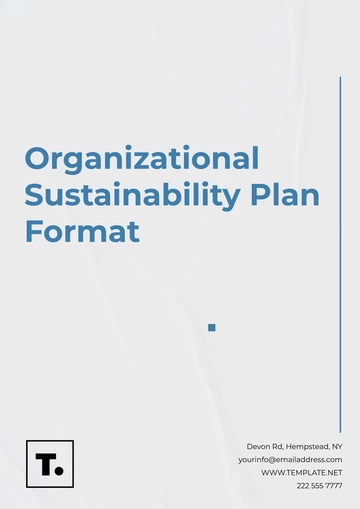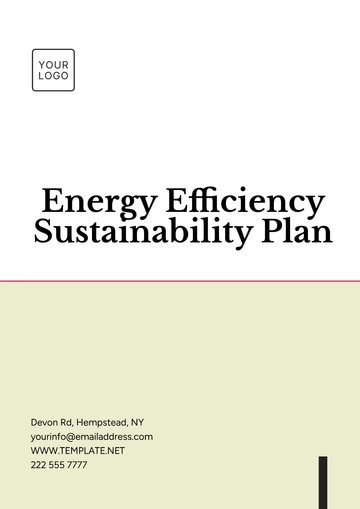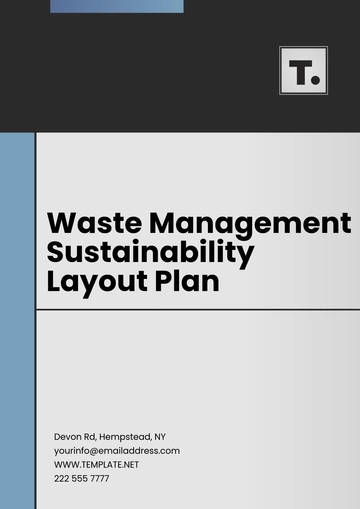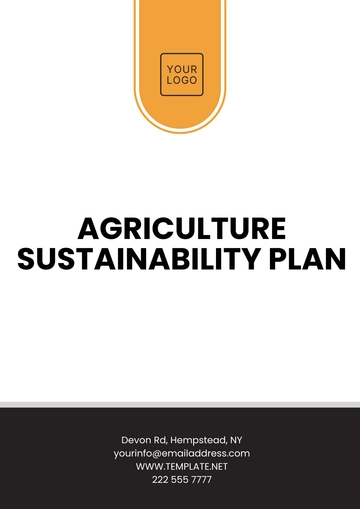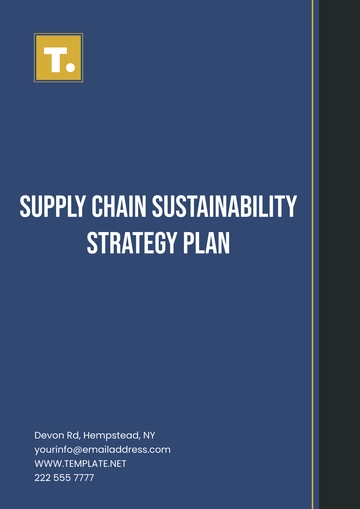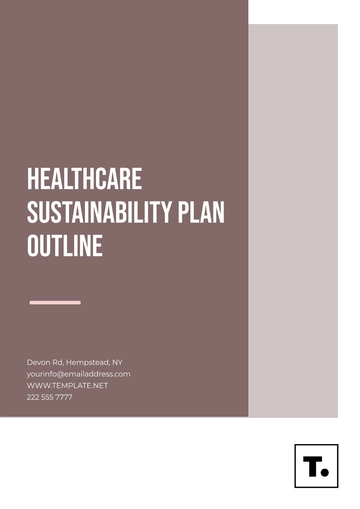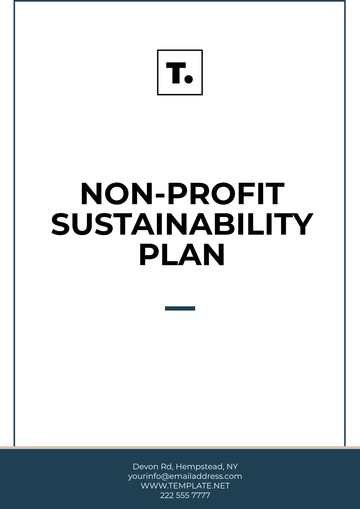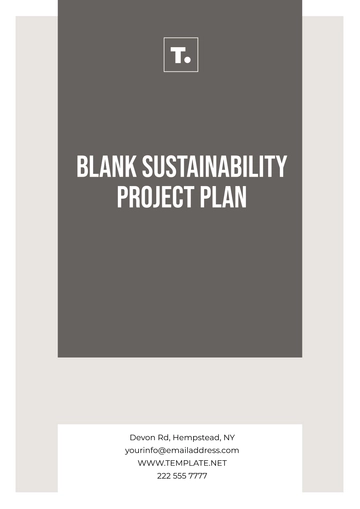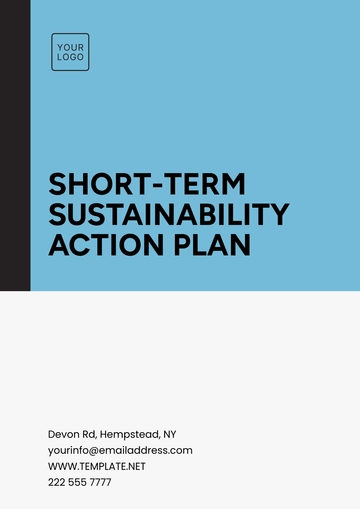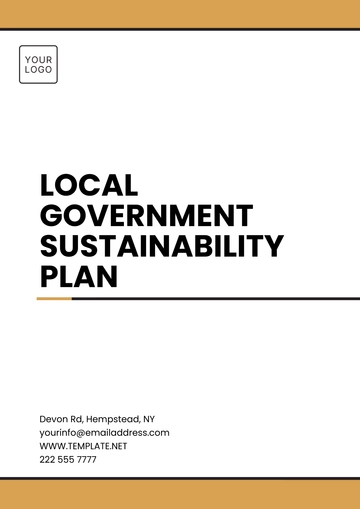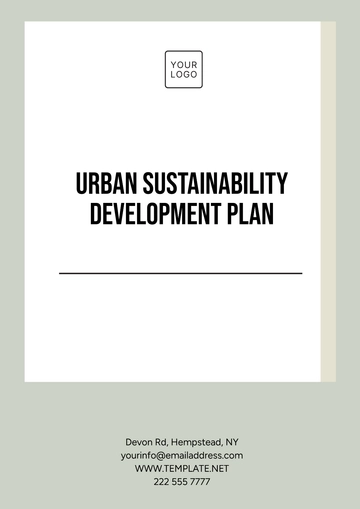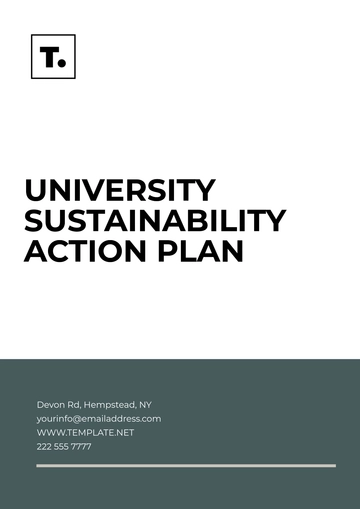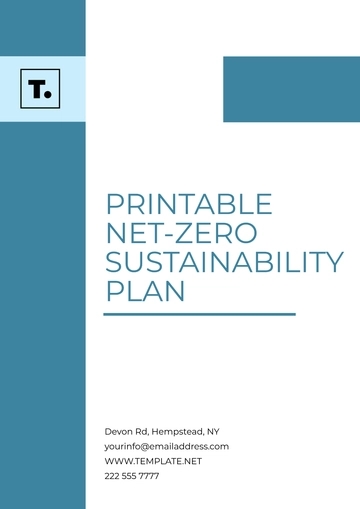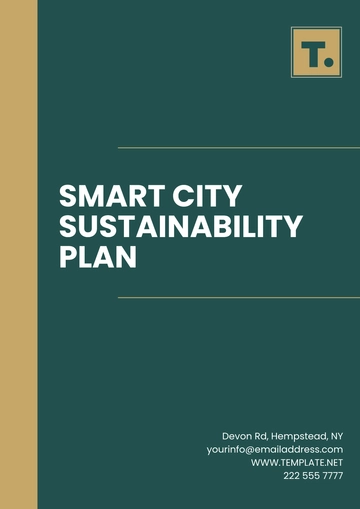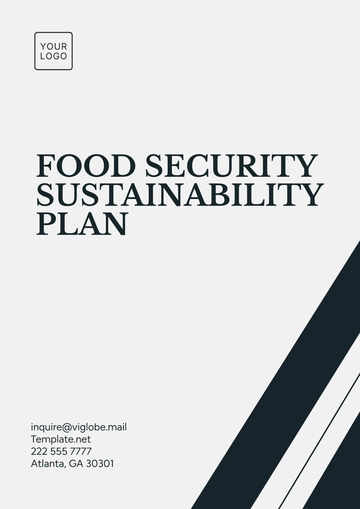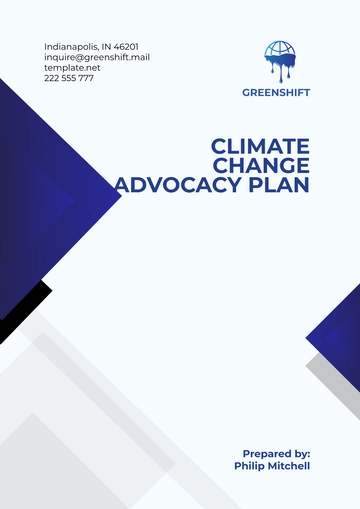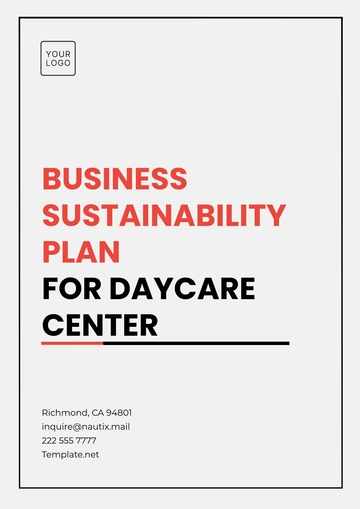Waste Management Sustainability Layout Plan
Date: [Date]
Prepared By: [Your Name]
I. Executive Summary
This section provides an overview of the waste management sustainability plan, highlighting its goals, objectives, and the expected impact on waste reduction, resource conservation, and environmental responsibility.
Organization Name: [Insert Organization Name]
Plan Duration: [Insert Duration (e.g., 3 years)]
Primary Objective: [Insert Key Objective (e.g., reduce waste by 30%)]
II. Introduction
Purpose: To implement sustainable waste management practices that reduce waste generation, promote recycling, and enhance the sustainability of operations.
Scope: This plan covers waste management strategies for [Insert Organization Name] across all departments, including production, office operations, and facilities management.
III. Waste Management Goals
Goal 1: Reduce total waste generated by [X]% over the next [Y] years.
Goal 2: Achieve a [X]% recycling rate by [specific year].
Goal 3: Divert organic waste from landfills by implementing composting initiatives.
Goal 4: Educate employees on sustainable waste practices and increase participation in waste management programs by [X]% in [Y] months.
IV. Waste Audit and Assessment
Current Waste Profile: Detailed analysis of the types and quantities of waste generated.
Total waste produced annually: [Insert Quantity]
Breakdown of waste categories (e.g., paper, plastic, food waste): [Insert Breakdown]
Waste Stream Analysis: Identifying key areas for improvement such as paper, plastic, electronic waste, and food waste.
Targeted Waste Reduction: Focus areas for waste reduction, e.g., reducing paper usage, optimizing packaging, and minimizing food waste.
V. Strategies for Waste Reduction
Source Reduction: Implementing practices to reduce the amount of waste produced, such as reducing packaging, reusing materials, and promoting digital documentation.
Recycling Programs: Setting up accessible recycling bins throughout the facility and establishing collection systems for paper, plastic, glass, and metals.
Composting: Introducing organic waste composting programs for food scraps and other biodegradable materials.
E-Waste Management: Establishing procedures for responsible disposal or recycling of electronic waste.
VI. Responsibilities and Roles
Waste Management Coordinator: [Insert Name/Title] – Oversees the waste management programs and tracks performance.
Department Heads: [Insert Name/Title of Relevant Department Heads] – Ensure that waste reduction and recycling measures are followed within their departments.
Employees: All employees are responsible for following waste segregation guidelines and participating in sustainability initiatives.
VII. Waste Management Practices
Waste Segregation: Implement a clear waste segregation system with designated bins for recyclables, non-recyclables, and compostables.
Packaging Optimization: Work with suppliers to reduce packaging materials and opt for eco-friendly alternatives.
Energy Recovery: Explore waste-to-energy opportunities where feasible, converting non-recyclable waste into energy.
VIII. Performance Monitoring and Reporting
Metrics and KPIs: Track the amount of waste generated, recycled, composted, and diverted from landfills.
Regular Audits: Conduct quarterly audits to assess progress toward waste reduction goals.
Reporting: Provide quarterly and annual reports on waste management performance to stakeholders.
IX. Budget and Resource Allocation
Funding for Initiatives: Allocate necessary funds for waste management infrastructure, such as recycling bins, composting systems, and educational programs.
Resource Distribution: Ensure the availability of resources to support waste reduction efforts, including staff training and necessary tools.
X. Education and Awareness
Employee Training: Provide ongoing training sessions to employees on sustainable waste practices and the importance of reducing waste.
Sustainability Campaigns: Promote waste reduction initiatives through newsletters, posters, and workshops.
XI. Partnerships and Collaboration
Local Recycling Facilities: Partner with local recycling companies to manage and process recyclable materials.
NGOs and Environmental Groups: Collaborate with organizations to stay updated on best practices and new technologies in waste management.
XII. Conclusion
Commitment to Sustainability: Reaffirm [Organization Name]’s dedication to implementing sustainable waste management practices and achieving its environmental goals.
Next Steps: Outline the next steps in the plan's implementation, including timelines for key initiatives and milestones.
Plan Templates @ Template.net
